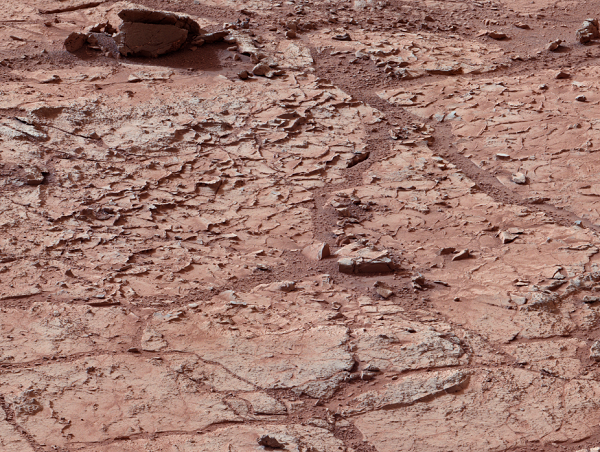Is There Life On Mars? Mud Cracks Discovered On Planet By NASA's Curiosity Rover

Ancient mud cracks have been discovered on Mars by NASA’s Curiosity rover, according to reports. Photographs taken by the spacecraft back in December were released Tuesday and depicted a cracked surface that could have been filled with water on Mars’ lower Mount Sharp site called Old Soaker.
After examining the photos, scientists determined the mud cracks may have formed about 3 billion years ago from wetting and drying cycles across the landscape, NASA officials said.
The Curiosity rover has already found proof of ancient lakes in older, lower-lying rocks on Mars, according to reports, as well as a mudstone above Old Soaker. The latest round of photos were the first images and evidence of actual mud cracks or desiccation cracks. Curiosity project scientist Ashwin Vasada said in a statement to Space.com that the photos are just another attribution to previous beliefs about water formations in the section of Mount Sharp.
Mud pie, anyone? @MarsCuriosity is examining possible mud cracks preserved in rock on the surface of #Mars https://t.co/bhU2XwbtoW pic.twitter.com/0Tjbzzf1i7
— NASA JPL (@NASAJPL) January 18, 2017
"The ancient lakes varied in depth and extent over time and sometimes disappeared. We're seeing more evidence of dry intervals between what had been mostly a record of long-lived lakes,” he said.
Cracked layers along Old Soakers layers suggested the area may have been buried by sediment at one time, leading to stratified rock, NASA officials said. Over time, wind may have caused rock erosion but may have left behind sand and dust that was embedded between raised ridges. The dust and sand may have been more resistant to erosion than mudstones in the area.
Along with the mud cracks, photos revealed areas of interspersed layers of sandstone and mudstone on Mars, as well as cross-bedding, which is a pattern of rock layers formed when water flows over a loose bed of sediment. In a statement, NASA explained cross-bedding patterns form “where water was flowing more vigorously near the shore of a lake, or from windblown sediment during the dry episode.”
Scientists will continue to observe Mount Sharp in hopes to determine when and how Mars’ surface became dry.
© Copyright IBTimes 2024. All rights reserved.






















